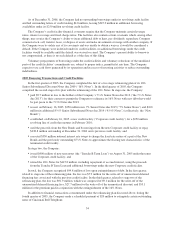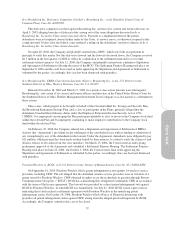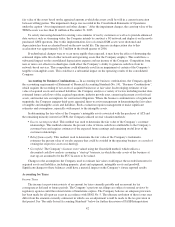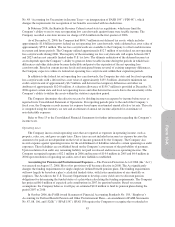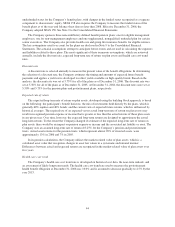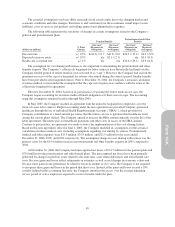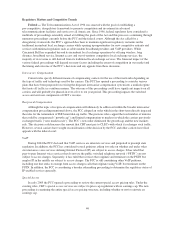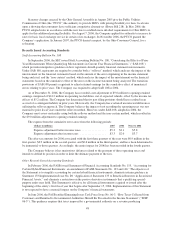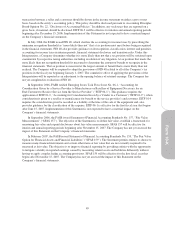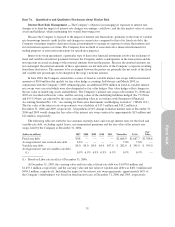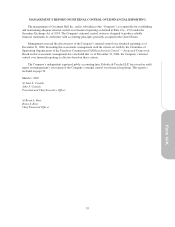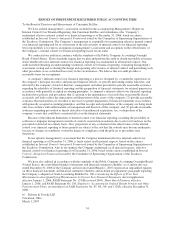Cincinnati Bell 2006 Annual Report Download - page 154
Download and view the complete annual report
Please find page 154 of the 2006 Cincinnati Bell annual report below. You can navigate through the pages in the report by either clicking on the pages listed below, or by using the keyword search tool below to find specific information within the annual report.underfunded status for the Company’s benefit plans, with changes in the funded status recognized as a separate
component to shareowners’ equity. SFAS 158 also requires the Company to measure the funded status of the
benefit plans as of the year-end balance sheet date no later than 2008. Effective December 31, 2006, the
Company adopted SFAS 158. See Note 9 to the Consolidated Financial Statements.
The Company sponsors three noncontributory defined benefit pension plans: one for eligible management
employees, one for non-management employees and one supplemental, nonqualified, unfunded plan for certain
senior executives. The Company also provides health care and group life insurance benefits for eligible retirees.
The key assumptions used to account for the plans are disclosed in Note 9 to the Consolidated Financial
Statements. The actuarial assumptions attempt to anticipate future events and are used in calculating the expenses
and liabilities related to these plans. The most significant of these numerous assumptions, which are reviewed
annually, include the discount rate, expected long-term rate of return on plan assets and health care cost trend
rates.
Discount rate
A discount rate is selected annually to measure the present value of the benefit obligations. In determining
the selection of a discount rate, the Company estimates the timing and amounts of expected future benefit
payments and applies a yield curve developed to reflect yields available on high-quality bonds. Based on the
analysis, the discount rate was set at 5.75% for all of the plans as of December 31, 2006. The discount rate was
set at 5.50% for all of the plans as of December 31, 2005. At December 31, 2004, the discount rates were set at
5.50% and 5.75% for the pension plans and postretirement plans, respectively.
Expected rate of return
The expected long-term rate of return on plan assets, developed using the building block approach, is based
on the following: the participant’s benefit horizons; the mix of investments held directly by the plans, which is
generally 60% equities and 40% bonds; and the current view of expected future returns, which is influenced by
historical averages. The required use of an expected versus actual long-term rate of return on plan assets may
result in recognized pension expense or income that is greater or less than the actual returns of those plan assets
in any given year. Over time, however, the expected long-term returns are designed to approximate the actual
long-term returns. To the extent the Company changed its estimate of the expected long-term rate of return on
plan assets, there would be an impact on pension expense or income and the associated net liability or asset. The
Company uses an assumed long-term rate of return of 8.25% for the Company’s pension and postretirement
trusts. Actual asset returns for the pension trusts, which represent almost 90% of invested assets, were
approximately 13% in 2006 and 7% in 2005.
In its pension calculations, the Company utilizes the market-related value of plan assets, which is a
calculated asset value that recognizes changes in asset fair values in a systematic and rational manner.
Differences between actual and expected returns are recognized in the market-related value of plan assets over
five years.
Health care cost trend
The Company’s health care cost trend rate is developed on historical cost data, the near-term outlook, and
an assessment of likely long-term trends. The health care cost trend rate used to measure the postretirement
health benefit obligation at December 31, 2006 was 10.0% and is assumed to decrease gradually to 4.5% by the
year 2013.
44


